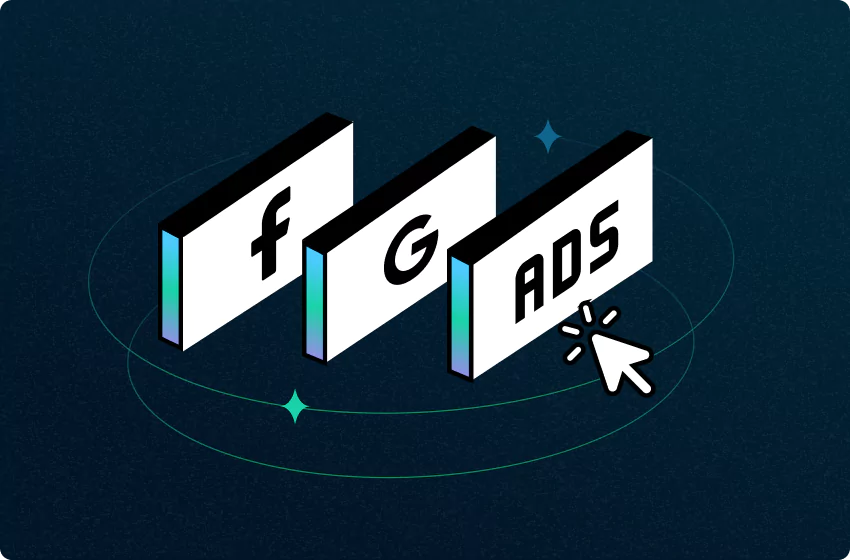First Click Attribution: What It Is and How To Use It (2025)

In the world of digital marketing, understanding what drives a customer to convert is critical. With multiple platforms, campaigns, and touchpoints involved in a single purchase journey, marketers need reliable models to track performance and allocate budgets effectively. One such model is first-click attribution—a simple yet powerful way to measure the impact of your awareness efforts.
What Is First-Click Attribution?
First-click attribution is a model that gives 100% of the credit for a conversion to the very first interaction a customer has with your brand. Whether it’s a paid search ad, a social media post, or a referral link, if it sparked the customer’s journey, it gets full attribution for the sale.
For example, if someone first discovers your store through a Facebook ad but returns later through email or organic search before purchasing, first-click attribution will credit the Facebook ad with the conversion. This model is especially useful for identifying which channels and campaigns are most effective at generating initial interest and driving brand discovery.
Single-Touch vs Multi-Touch Attribution
To put first-click attribution into context, it helps to understand the broader categories of attribution models: single-touch and multi-touch.
Single-touch models, like first-click and last-click attribution, assign all credit for a conversion to just one interaction. They’re simple and easy to implement, but they often fail to capture the complexity of modern customer journeys.
In contrast, multi-touch attribution models distribute credit across several interactions. These models, such as linear, time-decay, and position-based, offer a more complete picture by acknowledging that multiple touchpoints often contribute to a final sale. However, they typically require more advanced tracking and data analysis tools.
Pros and Cons of the First-Click Attribution Model
The biggest strength of first-click attribution lies in its clarity. It provides a direct answer to the question: What brought this customer to us in the first place? This makes it particularly valuable for top-of-funnel strategies, such as brand awareness campaigns or influencer marketing.
However, its simplicity can also be a drawback. By focusing solely on the first interaction, it overlooks the influence of retargeting ads, email nurturing, and final conversion tactics. This can lead to skewed insights and potentially misinformed budget decisions—especially in longer sales cycles where many touchpoints play a role.
When to Use First-Click Attribution
While first-click attribution has its limitations, there are specific scenarios where it can provide valuable insights:
- Focusing on lead generation: If your primary goal is to identify the most effective channels for acquiring new leads and building your initial audience, first-click can be a useful starting point.
- Top-of-funnel analysis: When evaluating the performance of awareness-stage campaigns and understanding where your initial traffic originates.
- Early-stage businesses: For new businesses with simpler marketing setups, it can offer an initial understanding of customer acquisition sources before implementing more complex models.
- Understanding initial referral sources: If you want to know which referral sources are most successful at introducing new customers.
However, for a comprehensive understanding of the entire customer journey and the impact of all your marketing efforts, it's generally recommended to move beyond single-touch models like first-click and explore multi touch attribution model options.
First-Click vs Last-Click Attribution Models
The debate between first-click vs last-click attribution models is a common one in marketing. As mentioned earlier, first-click credits the initial touchpoint, while last-click gives 100% of the credit to the final interaction before conversion.
- First-click helps you understand where your customers originate.
- Last-click helps you understand what ultimately convinced them to convert.
Relying solely on either model can lead to a skewed understanding of marketing performance. For example, a customer might discover your brand through a social media ad (first click) but only convert after receiving several targeted email campaigns (multiple touchpoints, with the final email being the last click). Attributing all the credit to either the initial ad or the final email alone would undervalue the impact of the other touchpoints.
In short, first-click attribution may not capture the full complexity of every conversion path, but it offers clear, actionable insight into the effectiveness of your top-of-funnel marketing efforts. When used thoughtfully—especially alongside other attribution models—it becomes a valuable tool for shaping smarter strategies and making informed decisions.
But first click attribution is not the only attribution model out there. There are many other models that can give you different insights into your marketing performance. For example, last click attribution, linear attribution, and time decay attribution. Depending on your goals and preferences, you might want to use different models for different purposes.
So, don’t limit yourself to just one attribution model! Explore and experiment with different models and see how they affect your conversion reports and insights. By doing so, you can improve your marketing strategy and increase your sales. One last piece of advice: Whether you’re running paid ads, testing new content, or exploring new acquisition channels, understanding the impact of the first click can help you optimize campaigns for long-term success. And with profit tracker apps like TrueProfit, tracking and analyzing these data becomes easier than ever.
Leah Tran is a Content Specialist at TrueProfit, where she crafts SEO-driven and data-backed content to help eCommerce merchants understand their true profitability. With a strong background in content writing, research, and editorial content, she focuses on making complex financial and business concepts clear, engaging, and actionable for Shopify merchants.





 Shopify profits
Shopify profits

